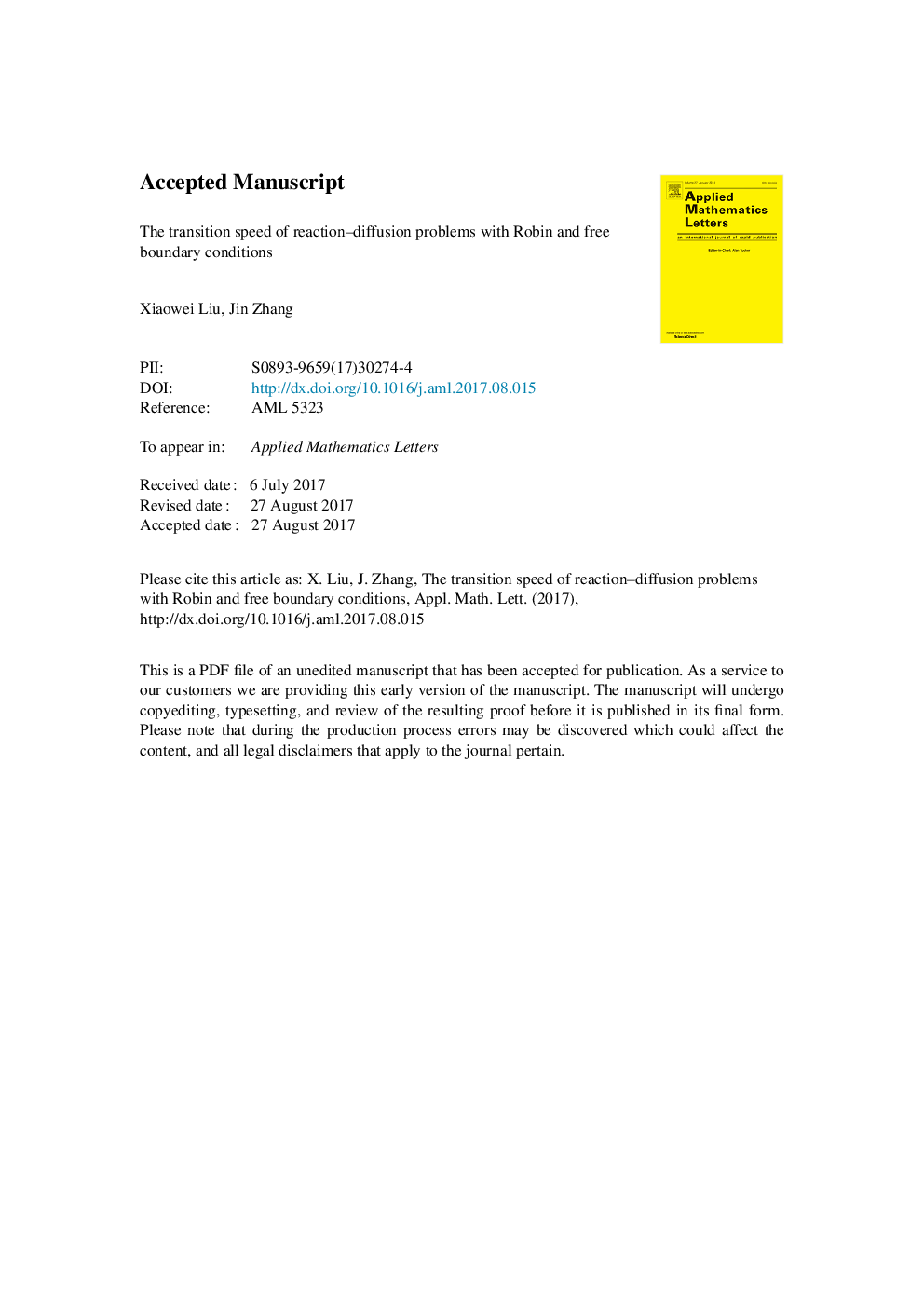| Article ID | Journal | Published Year | Pages | File Type |
|---|---|---|---|---|
| 5471515 | Applied Mathematics Letters | 2018 | 8 Pages |
Abstract
In Liu and Lou (2015), the authors considered the reaction-diffusion equation ut=uxx+f(u) with Robin and free boundary conditions. For the initial data ÏÏ, there exists Ïâ>0 such that spreading happens when Ï>Ïâ and vanishing happens when Ï<Ïâ. In the transition case that Ï=Ïâ, the solution u(t,x) converges to the ground state with a suitable shift: V(â
âξ(t)), and ξ(t) tends to a finite number (Case 1) or to â (Case 2) as tââ. For both cases, the right free boundary h(t) always propagate to infinity. In this paper, we will discuss the expanding speed of h(t) of these two cases. Actually, h(t)=1âfâ²(0)lnt+O(1) in Case 1 and h(t)=32âfâ²(0)lnt+O(1) in Case 2.
Related Topics
Physical Sciences and Engineering
Engineering
Computational Mechanics
Authors
Xiaowei Liu, Jin Zhang,
